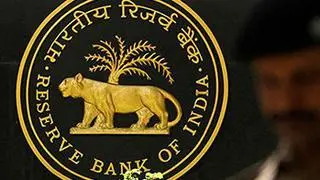The transmission of policy repo rate changes to banks’ deposit and lending rates continued during FY25, albeit at a slower pace, according to the Reserve Bank of India’s (RBI) FY25 annual report.
The weighted average lending rates (WALRs) on fresh and outstanding bank loans declined by 2 basis points (bps) and 8 bps, respectively. In case of deposits, weighted average domestic term deposit rates (WADTDRs) on fresh and outstanding deposits increased by 3 bps and 14 bps, respectively, with a rising proportion of deposits getting renewed at higher rates.
“The pace and extent of monetary transmission to lending and deposit rates of SCBs has strengthened in recent years, reflecting the Reserve Bank’s sustained efforts to impart transparency and flexibility to the interest rate structure,” the report said.
During the interest rate tightening cycle between May 2022-January 2025, banks revised their repo-linked lending rates upwards by 250 bps and 1-year marginal cost of funds-based lending rate (MCLR) by 178 bps. The WADTDRs on fresh term deposits and outstanding term deposits, too, increased during this period, mainly driven by bulk deposits.
Further, in response to the 25 bps cut in policy repo rate during the February policy meeting, banks have reduced their repo linked external benchmark lending rate (EBLR) by a similar magnitude. However, MCLR may undergo adjustments with some lag. Consequently, the WALR on outstanding rupee loans declined by 10 bps during the easing cycle of February-March 2025. However, in case of fresh loans, lending rate rose by 3 bps.
PSBs vs private banks
The share of external benchmark linked loans in total outstanding floating rate loans of public sector banks (PSBs) stood at 45 per cent, whereas it was 86 per cent for private banks as on December end. The share of MCLR and other legacy rate loans was significantly higher in PSBs as compared to private banks. “Thus, the predominance of legacy factors, viz., base rate, MCLR and others in PSBs’ portfolios have resulted in lower transmission to WALR on outstanding rupee loans of PSBs visà-vis PVBs,” the report said.
The interest rate on fresh rupee loans rose for vehicle, rupee export credit, and education loans, while it decreased for loans to professional services, MSMEs, infrastructure, agriculture, housing, trade, and large industry. In FY26, the RBI will revisit the optimal level of system liquidity needed for effective monetary policy transmission.
More Like This

Published on May 29, 2025
